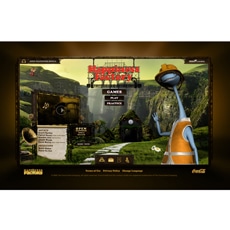Nigel Vaz, Managing Director of SapientNitro, discusses the impact of new media channels on consumer interaction.
The rise of the tablet computer, 3D TV and talk of holography and skinput are all testaments to the expanding spectrum of consumer-facing media. For marketers in particular, this growth signifies a new way of working as interactive marketing has become more than just ‘online engagement’. Yet, with so many more opportunities emerging for brands to engage with the general public, there is a new challenge to ensure consumers experience a consistent brand message wherever they are.
Playing with new toys
Marketers are more adventurous than ever when it comes to experimenting with new channels to engage with consumers. You only have to take a quick look online to see just how many brands have launched apps for the iPad in recent months. The Financial Times is a great example and boasts its success with 400,000 downloads and 10 per cent new digital subscriptions since its launch in May.
Such experimentation and expansion is crucial for consumer engagement, given the rate at which media consumption continues to fragment. With so many avenues now accessible to consumers they get bored rapidly and move from one platform to another at a terrifying speed. Even preferred access to established forums like Facebook changes on an almost annual basis as consumers move from the website to the iPhone to the iPad to interact with their ‘friends’.
Since there’s likely to be even greater fragmentation in the months ahead, brands need to engage with more consumers than ever. This is hugely exciting but adopting an ‘all over the place’ scenario is hugely challenging as not only do brands have to be everywhere consumers are, they have to work harder to engage with them while promoting the same overall message.
Keeping it in the family
It’s because of this that marketers need to avoid seeing interactive marketing in the narrow online- only sense and instead consider the real-life application of technology to build valuable long-term relationships with consumers. For example, it means launching apps that offer geolocation functionality to provide consumers with a valuable and useful service as well as allowing them to interact with a brand on the move. The app we developed for Auto Trader is a good example of this. It allows users to search for vital vehicle data on the go and locate their nearest showroom. Ultimately, it ensures Auto Trader is engaging with consumers on their terms.
Crucially, successful marketing strategies will be those that manage to integrate and expand their consumer offering across new channels without diluting the overall message. Coca-Cola’s Happiness Factory campaign is an example of how this can be done well. The brand has created a rich story around the idea that their vending machines have a whole world existing within them, known as the Happiness Factory. Feeding off this single concept sits a whole range of campaign activity – everything from a website, TV ads and even a co-created music track. This integrated cross-channel approach means however consumers choose to engage with the brand, they will experience consistency and familiarity, which are both essential for building a long-term relationship.
Ensuring clarity
The growth of new technology has made a marketer’s job significantly more complex. It’s no longer just about having a Facebook page or using Twitter. There’s the new challenge of trying successfully to engage with the target audience in all the right places, on their terms, while keeping the brand message strong and consistent. Succeeding in this requires some joined-up thinking to ensure that however a consumer decides to engage with a brand, they enjoy a homogenous and positive experience.
Nigel Vaz, Managing Director, SapientNitro
Twitter: @SapientNitro


